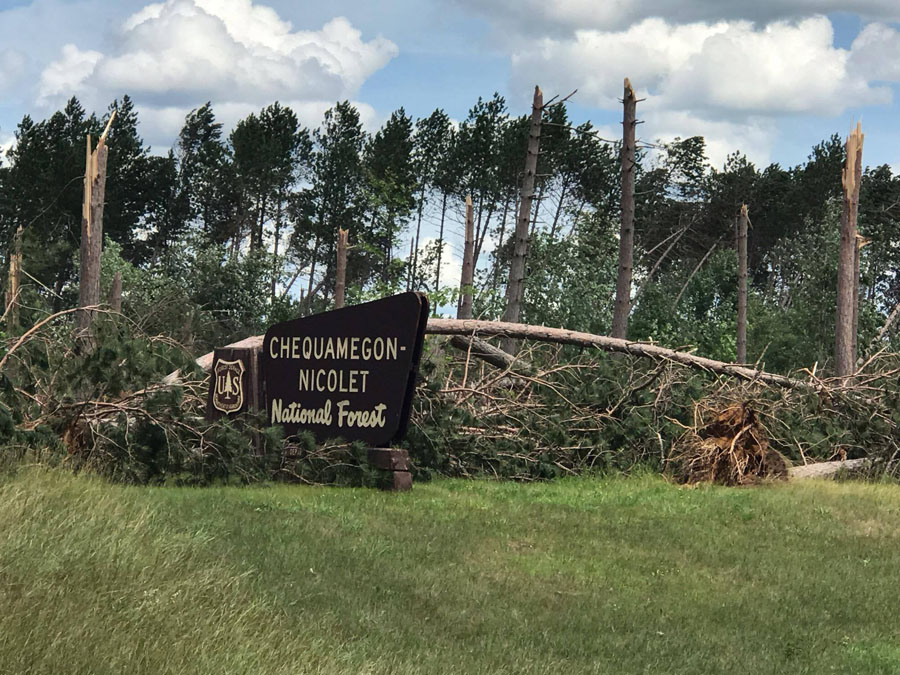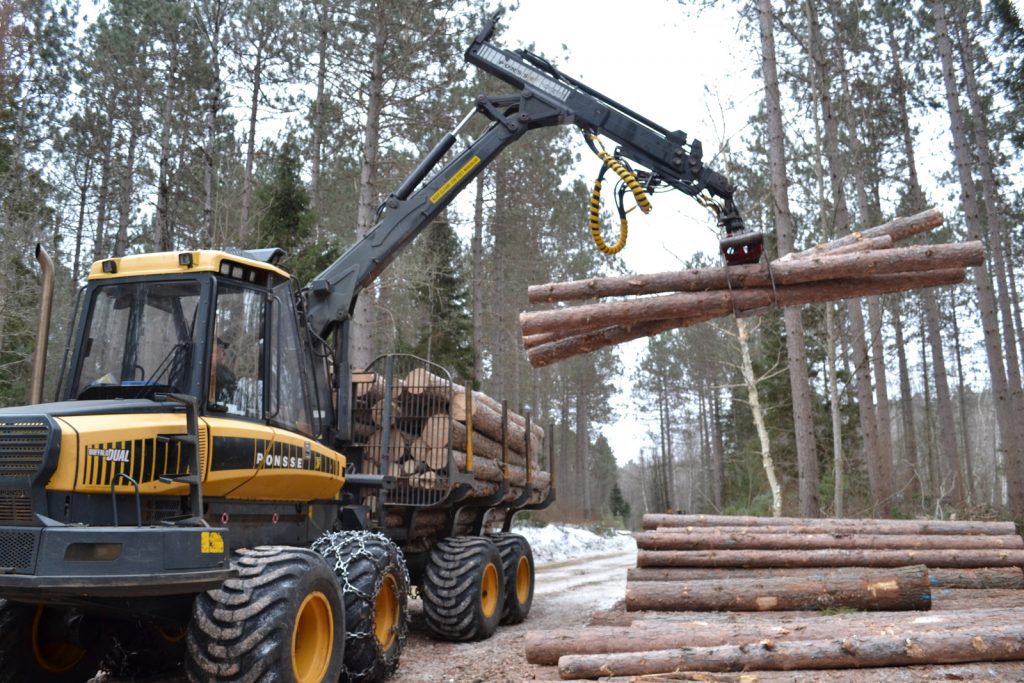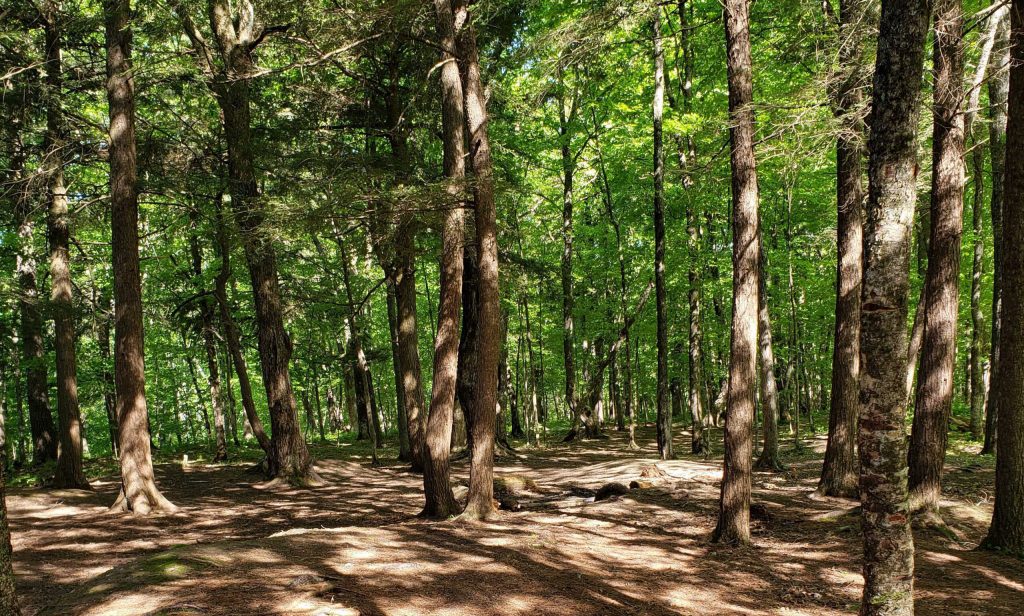Trump Administration Wants to Fast Track Logging in Wisconsin, U.S.
'Emergency designation' and quicker environmental reviews to boost logging.
The Trump administration is speeding up environmental reviews of logging projects on more than half of the country’s national forests, including parts of the Chequamegon-Nicolet National Forest in Wisconsin.
On Friday, U.S. Department of Agriculture Secretary Brooke Rollins issued an emergency designation on more than 112 million acres of national forest land, citing risks from wildfires, insects and disease. The move seeks to align with President Donald Trump’s order to boost logging and reduce reliance on foreign lumber.
The move allows the Forest Service within USDA to engage in faster permitting and roll back federal environmental regulations.
Ron Eckstein is the co-chair of the public lands and forestry work group for Wisconsin’s Green Fire. He said he doesn’t think existing federal regulations are too burdensome for loggers.
“We can produce the timber we need to produce. We can protect against wildfire using the (National Environmental Policy Act) process and Endangered Species Act and still produce forest products, yet protecting all the other values of the national forests, like wildlife, watershed, recreation, including timber,” he said.
Eckstein noted the Chequamegon-Nicolet National Forest is already one of the top timber-producing national forests in the country. The forest sold around 125 million board feet in fiscal year 2024. The Forest Service sells an average of 3 billion board feet each year nationwide.
Over the next five years, the Trump administration aims to increase timber production 25 percent across the agency. A national strategy will be developed within the next month.
“I am proud to follow the bold leadership of President Trump by empowering forest managers to reduce constraints and minimize the risks of fire, insects, and disease so that we can strengthen American timber industry and further enrich our forests with the resources they need to thrive,” Rollins said in a statement.
A map released by the Trump administration shows lands subject to the emergency designation within the Chequamegon-Nicolet National Forest, which covers almost 1.5 million acres.

Thousands of acres of forest were damaged in the Chequamegon-Nicolet National Forest due to severe storms in 2019. Photo courtesy of the Chequamegon-Nicolet National Forest
Former forest supervisor calls for transparency around at-risk lands
Paul Strong, former supervisor of the Chequamegon-Nicolet National Forest, said it’s unclear how the Forest Service determined lands at high risk for wildfires and infestations.
“I would want to know what are the characteristics of that area and information that was used to declare that there is an emergency situation there — either threat from wildfire or threat from insect and disease or something else that affects human health and safety,” Strong said.
“It was an area that was impacted in part by the 2019 blow down on national forest and other lands. There was a lot of salvage timber operations that also reduced heavy fuels that could have been dangerous if they hadn’t been removed,” Strong said. “But it didn’t affect that entire area.”
He added that the forests are made up of trees like maples, basswood and oak that aren’t associated with insect or disease problems to his knowledge.
Based on a cursory review of the map, Strong said, most if not all areas are dominated by northern hardwood forests. He said there’s demand for high quality timber from the industry.

A forwarder stacks fresh cut logs on the side of a timber road in the Chequamegon-Nicolet National Forest. Glen Moberg/WPR
Logging advocates say move will reduce delays, improve forests
Scott Dane, executive director of the American Loggers Council, represents about 10,000 logging companies and about 50,000 employees nationwide in the timber industry. He said the memo and Trump’s order is a big step forward to reversing policy that has resulted in less forest management and unhealthy forests.
Rollins’ memo prevents groups from challenging logging proposals before the agency issues a decision on them. Environmental and conservation groups have frequently challenged and delayed projects seeking approval.
Dane said mills have gone out of business due to unstable timber supplies, arguing many could handle additional capacity.
“It has the potential to improve forest management on national forests, improve the health of the national forests, as well as create opportunities for the rural communities and jobs that depend on the national forests,” Dane said.
The forestry and logging sector directly employs around 4,400 of the 57,000 workers in Wisconsin’s nearly $27 billion forest products industry.
The Trump administration is seeking to use stewardship contracts or Good Neighbor Authority agreements to ramp up logging. The Department of Natural Resources has said it’s conducted just shy of 200 timber sales spanning 32,000 acres under an agreement with the agency in the past decade.
As the Trump administration seeks to boost logging, reports state the Forest Service is planning to consolidate its nine regional offices into three. As many as 7,000 agency employees could be laid off under a reduction in force.
Trump administration will fast-track reviews to ramp up logging in Wisconsin was originally published by Wisconsin Public Radio.
If you think stories like this are important, become a member of Urban Milwaukee and help support real, independent journalism. Plus you get some cool added benefits.





















